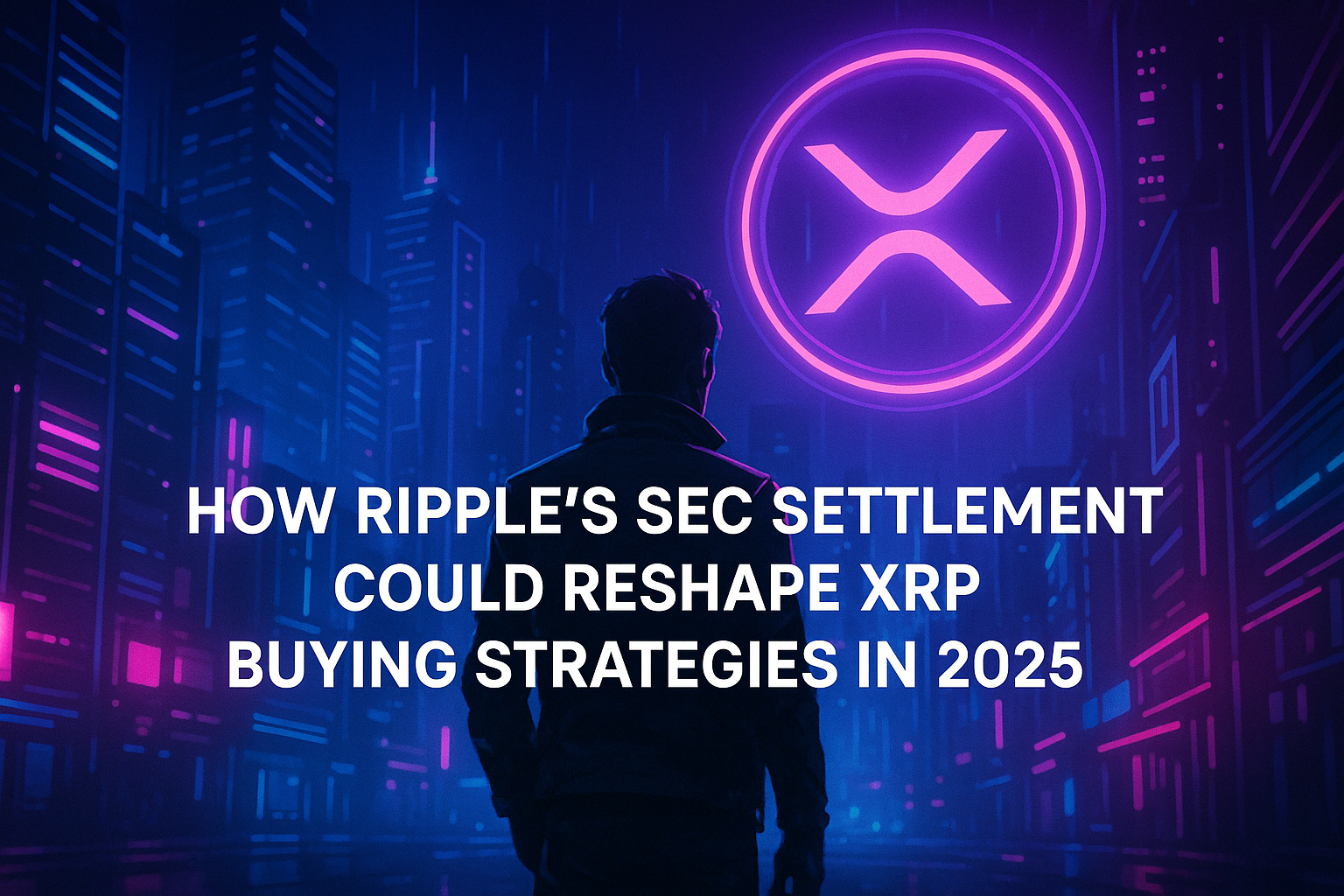Ripple’s multi-year standoff with the U. S. Securities and Exchange Commission (SEC) finally reached a dramatic conclusion in early 2025. After several failed attempts to reduce penalties and dissolve injunctions, both parties agreed on a $125 million civil penalty, marking an end to one of crypto’s most significant legal sagas. With Ripple’s settlement now official and the SEC dropping its cross-appeal, XRP investors are facing a transformed market environment, one defined by regulatory clarity, renewed institutional interest, and evolving buying strategies.
XRP’s Regulatory Clarity: The Catalyst for Strategic Shifts
For years, uncertainty over XRP’s legal status discouraged both retail and institutional investors from making bold moves. Now, with the SEC formally ending its pursuit and Ripple accepting a $125 million penalty, the regulatory fog has lifted. This clarity is not just symbolic, it unlocks new pathways for adoption in banking, government payments, and mainstream finance. The U. S. government is already exploring ways to fast-track XRP’s use in institutional settings, as noted in recent SEC filings.
The settlement also allows Ripple to resume direct sales of XRP to institutions, a key development that could boost liquidity and stabilize prices. On March 19, 2025, when news broke that the SEC would withdraw its appeal (Reuters), XRP surged more than 8%, briefly hitting $2. 53 before settling at $2. 19. Analysts now forecast further upside potential as regulatory risk fades from the equation.
Institutional Momentum: New Fuel for Price Action
The post-settlement landscape has attracted heavyweight players back into the fold. Notably, the Chicago Mercantile Exchange (CME) is preparing to launch cash-settled XRP futures contracts (Reuters). This move signals Wall Street’s growing confidence in XRP’s legitimacy as a financial instrument, and could be a precursor to even broader adoption such as an XRP ETF, which Bloomberg analysts now give a 65, 75% probability of approval by year-end.
For investors considering how to buy XRP after the lawsuit, these institutional developments are more than just headlines, they represent tangible shifts in market structure and liquidity dynamics. With Ripple authorized to sell directly to big players again, expect deeper order books and potentially less volatility around major news events.
XRP Price Movements: Navigating Volatility Post-Lawsuit
The aftermath of legal clarity has already produced sharp price swings, XRP jumped from around $2. 02 pre-announcement to a high of $2. 53 before retracing slightly to $2. 19 today. While some speculate about whether XRP can reach $3. 50 or even $5 by year-end (Watcher. Guru), experienced traders know that regulatory events often trigger both rallies and profit-taking corrections.
This environment calls for disciplined strategies such as dollar-cost averaging (DCA), which can help mitigate timing risks during periods of heightened volatility. Some investors are also diversifying into related assets or exploring secure cloud mining platforms, which have seen user registrations spike by nearly 25% since the legal resolution was announced.
With Ripple’s legal overhang finally resolved, the question for many is not just whether to buy XRP after the lawsuit, but how to approach it in a market that’s rapidly evolving. The increased institutional participation, CME’s upcoming futures contracts, and the possibility of an XRP ETF are all factors that can drive both liquidity and price discovery. But these same factors introduce new variables for retail investors who want to secure XRP purchases without getting caught in speculative whiplash.

Refining Your 2025 Strategy: Buying XRP with Confidence
The return of regulatory clarity means exchanges can now list XRP with fewer compliance concerns, making it easier and safer for individuals to purchase and hold. For those focused on secure XRP purchase, sticking with reputable, regulated platforms is more important than ever, especially as institutional flows ramp up and volatility spikes around major events.
Consider these practical strategies:
- Dollar-cost averaging (DCA): Spread purchases over time to reduce the risk of buying at short-term peaks.
- Diversification: Don’t put all your eggs in one basket; balance your crypto portfolio across several assets.
- Stay informed: Monitor legal news analysis and regulatory updates, since further developments could still impact sentiment or market structure.
- Institutional signals: Watch for CME futures volume and any ETF progress as leading indicators of broader adoption or price trends.
XRP Price at $2. 19: What’s Next?
XRP’s current price of $2. 19 reflects both optimism about its future utility and lingering caution from years of legal uncertainty. Should additional institutional products launch successfully, such as an ETF or expanded futures contracts, analysts see room for growth beyond current levels (Watcher. Guru). Still, every investor should be wary of hype cycles that could trigger sharp corrections, especially if broader crypto markets turn volatile.
Will you increase your XRP holdings now that the SEC settlement is finalized?
With the SEC dropping its appeal and Ripple’s legal battle resolved, XRP is trading at $2.19 and analysts foresee further growth. Are you planning to adjust your investment strategy in light of this regulatory clarity?
The SEC settlement has already set a precedent for how other cryptocurrencies might navigate similar legal challenges in the future. In this sense, Ripple’s outcome is not just about one token, it offers a real-world case study on how regulatory clarity can transform a digital asset from an uncertain bet into a viable strategic holding.
If you’re considering how best to buy or hold XRP in this new era, focus on fundamentals: use secure platforms, stay updated on market news, and don’t chase speculative rallies without a plan. The landscape may be clearer now than it was a year ago, but as always in crypto, vigilance remains your best ally.
